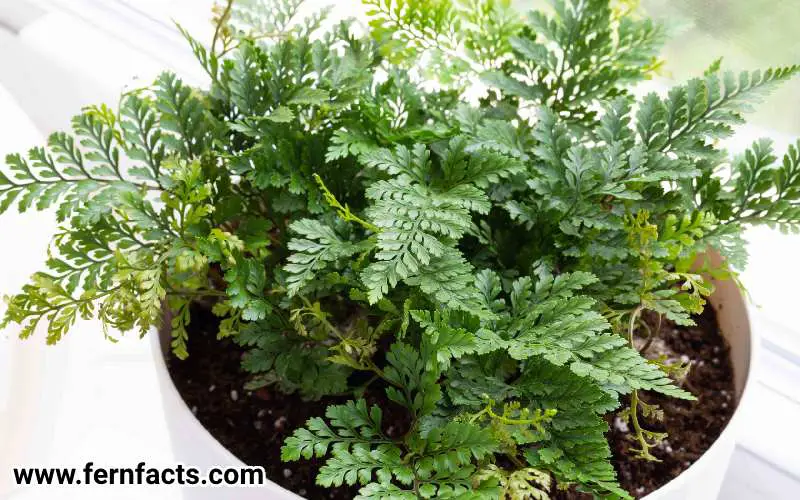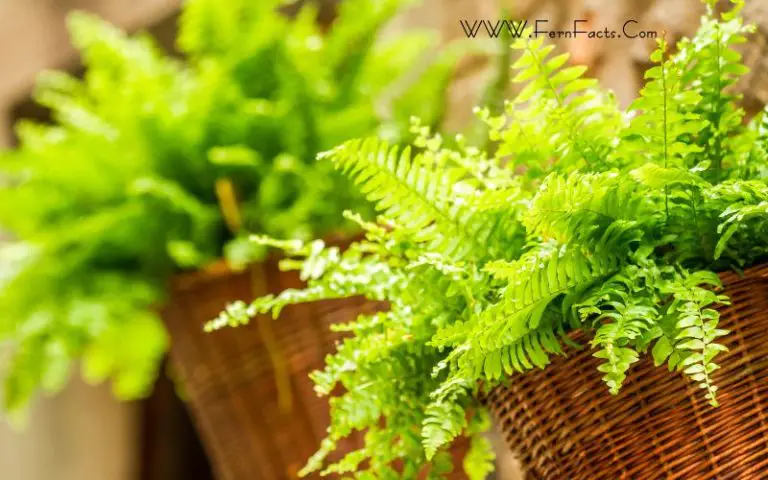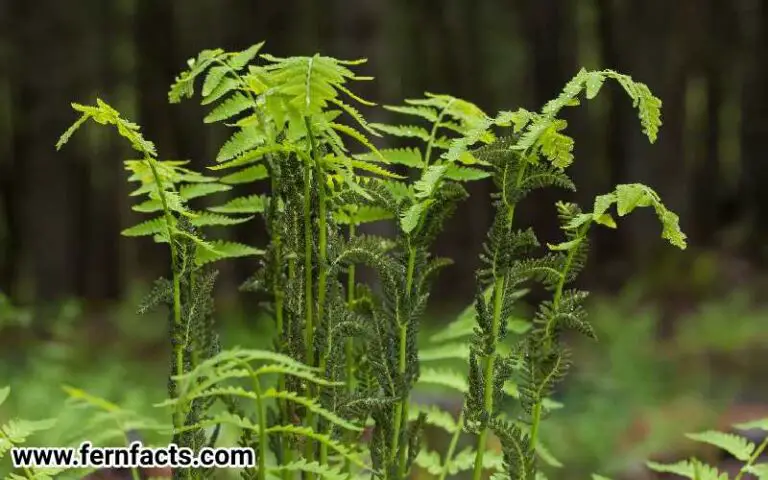Squirrel’s foot Fern (Davallia Bullata) – All You Need to Know
Have you heard about Squirrel’s foot ferns? Does their name amaze you? Well, Squirrels’ foot fern fronds almost resemble the feet of Squirrels. It also has several other names like rabbit’s foot ferns, deer foot, hare foot, etc.
Basically, its fronds look like animal feet and its name is given this way. If you are curious to know more about these ferns, then read this article thoroughly.
In this article, I’ll illustrate the overall idea about these Squirrel’s foot ferns regarding their characteristics, their different varieties, and so on.
Besides, I’ll give you their growing conditions so that you can grow and plant these ferns in your house without having any difficulties. So let’s delve into the topic more precisely.
Overview of Squirrels Foot Fern
- Botanic name: Davallia Bullata
- Common name: Squirrel foot, here’s Foot, deer’s foot, rabbit’s foot fern
- Family: Davalliaceae
- Native range: Asia, Africa and Europe
- Plant: Perennial
- Height: around 20 to 30 inches
- Wide: 12 to 40 inches
- Shade: partial sun
- Soil: peat-based soil; moist loamy
- Soil pH: acidic, neutral
- Hardiness zone: 10, 11, 12
- Toxicity: non-toxic
Squirrel foot ferns are perennial plants that kind of resemble squirrel Foot shapes. These ferns tend to have growing formation from scaly rhizomes which are basically covered with fine fur.
This fur also gives an overview like a mat of hairs. Generally, they are highly visible in Japan and China. They are basically native to East Asia, Africa, and Europe continents.
Similarly, their other varieties can also be found in Fiji island in Oceania. They can grow a maximum of 20 to 30 cm in height with linear leaflets.
Their ideal temperature would be around 60 to 75°F. However, these Squirrel foot ferns’ maximum survival rate is above 55°F or 13° C. They cannot tolerate it if the temperature goes below this level.
You can keep these ferns both inside or outside of your house as ornamental plants. Even these ferns are the best for hanging or potting as they can expose their hairy roots and fronds out of the container which will give the a bushy appearance.
Because of their hairy root rhizomes, they give the appearance of animal feet.
Squirrels Foot Ferns Care and Guidance
Most ferns need less care and maintenance to grow and thrive actively. These Squirrels foot ferns are craved for less care and maintenance.
From the below-mentioned guidelines, you can easily supervise your Rabbit’s foot ferns at your house.
Light
These Squirrel’s foot ferns can grow best in filtered sunlight. They can grow best under shaded places. Therefore you can place your ferns in the North or east-facing window if you tend to place them indoors.
Never give them direct sunlight exposure which can burn their fronds. Additionally, you can also grow them under article lighting. Because they are well adapted to artificial lighting.
Soil
For their soil mixture, make their soil fully peat-based. You can also add loam to the soil to make the soil more enriched.
And so, a peat-based rich soil mixture can naturally enrich the quality of the soil’s nutrients and microorganisms. This highly enriched soil component also makes the soil well-drained.
Water
Further, these Squirrel foot ferns are fond of moist soil. Therefore, you have to water these ferns rhizomes while maintaining the consistency.
Don’t let their rhizomes dry out because of less watering as it can harm their roots. Nevertheless, they don’t tolerate waterlogged situations in their soil.
Thus you must keep the soil moist without being overly soaked. You can reduce the watering level in winter seasons because they went dormant in that phase.
Fertilizer
For feeding purposes, you can use both liquid fertilizer or organic slow-release fertilizer on alternative days. Try to feed them during their growing seasons which are mostly spring and summer seasons.
Simply follow the label instructions which are given on the package. Reduce the feeding process in winter or late fall seasons as it’s their dormant stage.
Temperature and Humidity
Moreover, Squirrels’ foot ferns prefer warm humid climates to thrive. Mostly, they thrive in temperatures between 60 to 75°F or 15 to 24°C.
Additionally, they wouldn’t survive if the temperatures were lower than 55°F or 13°C. Therefore, you have to keep the temperature above 60°F so that your ferns can thrive fully.
Pruning
These Squirrel foot ferns don’t require much pruning and trimming. However, you can still cut off the dead, dull fronds, or yellow fronds during their growing seasons.
Overwinter Care
If you live in a cold frigid area, then you must take care of your Squirrel’s foot ferns. You need to do some overwinter care protection in order to keep your ferns survive.
Before winter starts, take inside your outdoor potted ferns. Since they go dormant in the winter season, the still-frozen atmosphere might freeze their roots and rhizomes.
In such cases, you can add mulch to hold the moisture in the soil. Also, reduce the watering and feeding habits as their growth eventually gets slowed in those seasons.
How to Propagate Squirrels Foot Ferns
You can effortlessly propagate these ferns by cutting their rhizomes into two parts. You can get variable rhizomes from the main rhizomes of the plants.
For Propagating your ferns, you have to take sterilized and sharpened pruning tools. Then, cut the rhizomes around 2 to 3 inches deeper along with frond alignment.
Now that you have cut the fronds, you need to make rich soil. Try to make the soil fully peat-based along with loamy soil.
Afterward, plant the half rhizomes parts into the container and fill the container with the remaining soil. Lastly, water the soil to give proper hydration.
How to Repot Squirrels Foot Ferns
Repotting is somehow very necessary to reduce the fern root-bound situation. Also, you need to do repotting every two to three years if the roots outgrow.
- Choose a pot with a bigger container; at least 2 inches bigger in size so that they’ll get proper accommodations to grow.
- Later, fill the pot half with your new mixer soil. Prepare thoroughly peat-based loamy soil for your Squirrel’s foot ferns.
- Then take your fern and loosen the soil. Dust the soil from the side while holding the root balls.
- Replant your squirrel’s foot fern in the pot and fill it with your new mixing soil.
- Then water the plants so that they can get instant hydration.
Final Thought
In the final observation, these Squirrel’s foot ferns are low-maintenance ferns that will nourish your house garden’s looks. You can place these ferns both indoors and outdoors.
These ferns are famous for hanging and basket appearances on the balcony which make the house scenario more nature-centric vibe.
By following above-mentioned guidelines, hopefully, you can have healthy growing squirrel foot ferns at your house.







